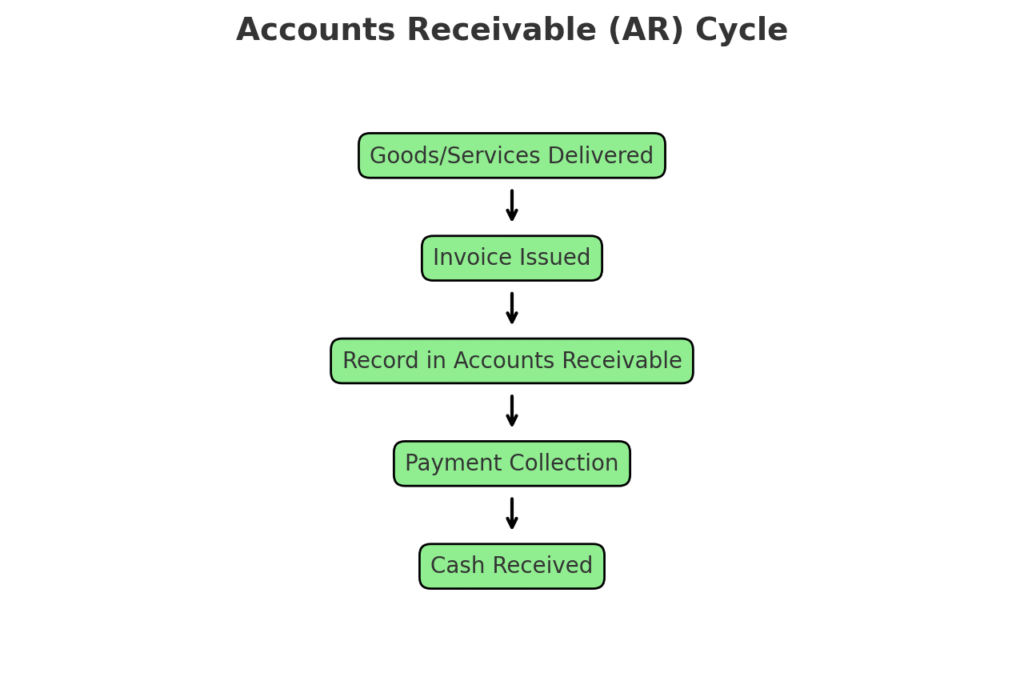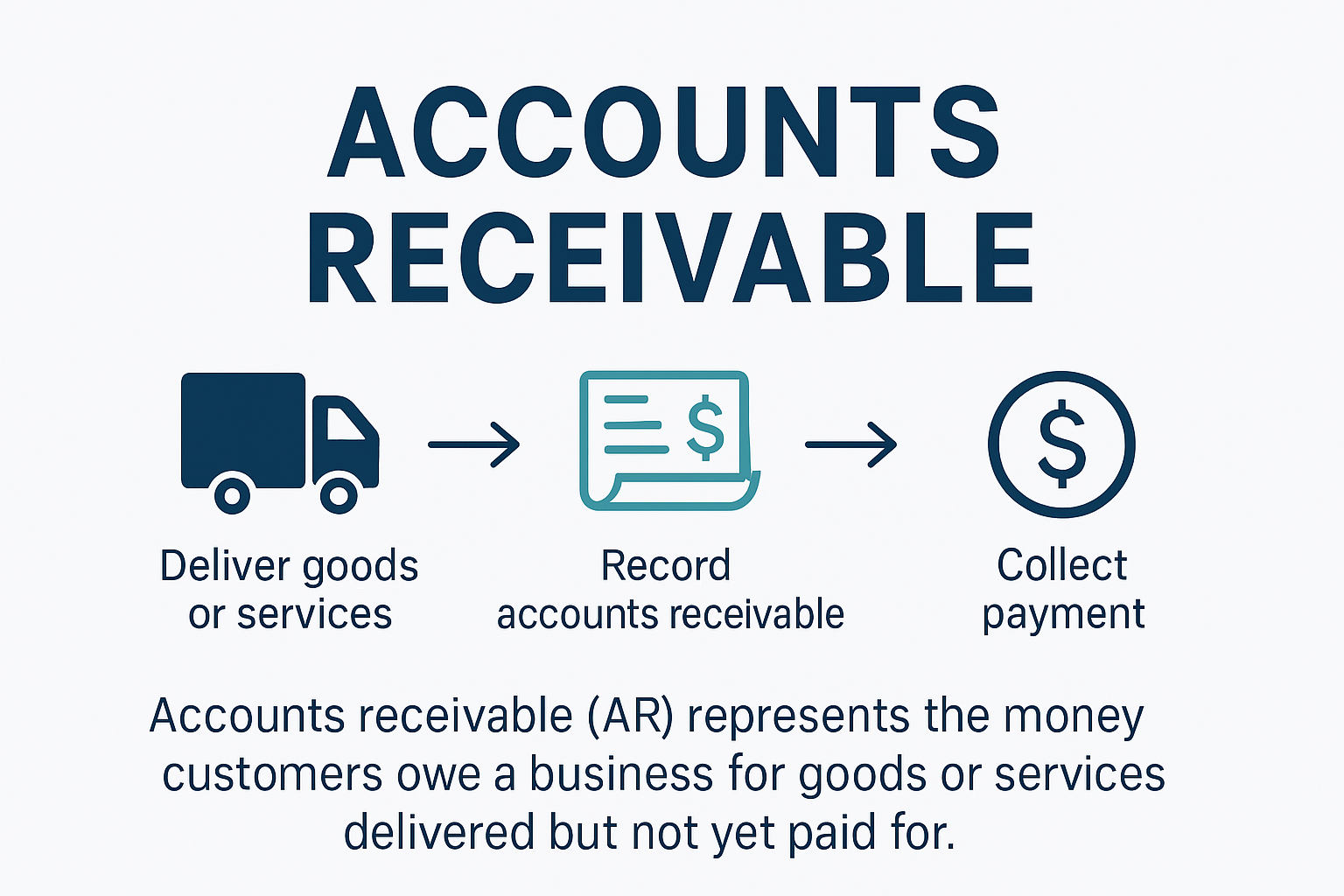Accounts receivable (AR) represents the money customers owe a business for goods or services delivered but not yet paid for. It is recorded as a current asset on the balance sheet and directly affects a company’s cash flow and liquidity.
This guide explains accounts receivable in simple terms with examples, formulas, and practical insights for businesses and investors.
What Is Accounts Receivable?
Accounts receivable (AR) is the outstanding balance of money due to a company from its customers after sales on credit.
Example:
- A company sells $10,000 worth of furniture to a customer on a 30-day credit.
- Until the customer pays, the $10,000 is recorded as Accounts Receivable.
How Accounts Receivable Works
Journal Entry (when selling on credit):
Debit: Accounts Receivable (Asset) ...... $10,000
Credit: Sales Revenue (Income) .......... $10,000Journal Entry (when payment is received):
Debit: Cash/Bank (Asset) ................ $10,000
Credit: Accounts Receivable (Asset) ..... $10,000This ensures that revenue is recognized when earned, even before cash is collected.
Accounts Receivable vs Accounts Payable
| Feature | Accounts Receivable (AR) | Accounts Payable (AP) |
|---|---|---|
| Definition | Money owed to the business | Money owed by the business |
| Balance Sheet Category | Current Asset | Current Liability |
| Example | Unpaid customer invoices | Unpaid supplier bills |
| Cash Flow Impact | Inflow (future cash) | Outflow (future payments) |

Key Accounts Receivable Metrics
1. Accounts Receivable Turnover Ratio
Shows how efficiently a company collects payments from customers.
Formula:
AR Turnover = Net Credit Sales ÷ Average Accounts ReceivableExample:
- Net Credit Sales = $500,000
- Beginning AR = $40,000
- Ending AR = $60,000
- Average AR = ($40,000 + $60,000) ÷ 2 = $50,000
AR Turnover = 500,000 ÷ 50,000 = 10This means the company collects its receivables 10 times a year.
2. Days Sales Outstanding (DSO)
Measures the average number of days it takes to collect receivables.
Formula:
DSO = (Accounts Receivable ÷ Net Credit Sales) × 365Advantages
- Boosts sales by offering customers credit
- Strengthens customer relationships
- Provides early signals of financial health
- Can be used as collateral for financing
Disadvantages
- Delayed payments reduce cash flow
- Risk of bad debts (customers not paying)
- Requires monitoring and collection costs
- Can overstate liquidity if uncollected
Use Cases: Why Accounts Receivable Matters
- Business Owners → Monitor cash inflows and improve collection policies.
- Accountants → Ensure revenue recognition compliance.
- Investors → Assess liquidity and credit management.
- Lenders → Evaluate whether receivables can secure loans.
FAQS
It’s a current asset because it represents money owed to the company.
Unpaid customer invoices for goods or services delivered on credit.
It’s a debit balance account. When customers pay, AR is credited.
Most companies use 30 to 90 days, but it varies by industry.
Other Link Suggestions
Sources Link
- SEC – Understanding Financial Statements
- FASB – Accounting Standards
- Investopedia – Accounts Receivable
The Bottom Line
Accounts receivable represent money owed by customers and are a vital measure of a company’s liquidity and operational efficiency. Proper AR management ensures steady cash flow, minimizes bad debt risks, and supports business growth.
Whether you’re a small business owner, investor, or accountant, understanding AR helps you evaluate how effectively a company converts sales into cash.






